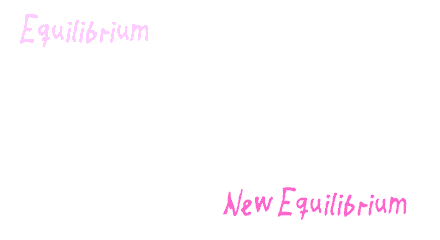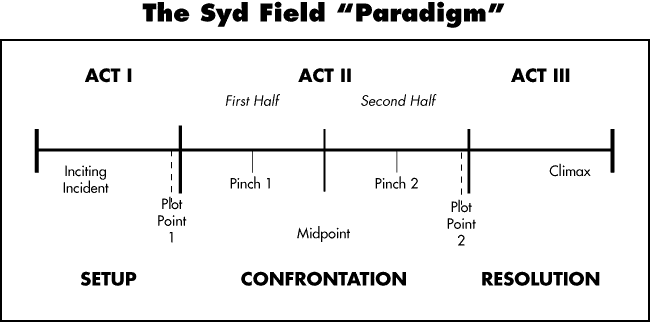Todorov's Theory
.jpg)
Tzvetan Todorov is a Bulgarian philosopher born March 1, 1939. He has lived in France since 1963 and now lives there with his wife and their two children, writing books and essays about literary theory, thought history and culture theory.
However the main part of this blog is outlining his theory on narrative. He believed that every story followed a three part narrative. Equilibrium - Disequilibrium - New Equilibrium. This basically means that at the beginning of the story there is a balance that we the audience consider normal. There is then a disturbance that cause the normal to change and all of a sudden there is no linger a balance. Finally after the disequilibrium there is a new balance that we know consider normal however it is slightly or largely different to the standard equilibrium. This is known as the Todorovian Narrative.

Syd Field's Theory

He also had a theory as to narrative and it has served him quite well. He followed up on Todorov's theory and claimed that the Disequilibrium was the main part of the film where the audience is most interested. His theory (below), however was more complicated and suited to films more than all stories. His theory addresses the fact that in act 1 and incident builds up but doesn't begin. The audience knows something is going to happen. This stage is known as the setup. Next is is the confrontation, two sections were the incident occurs and the hero or good guy gains confidence to step up to the challenge (example). Finally the resolution comes were the climax happens and the good guy or the hero wins the battle or confrontation.

Vladimir Propp's Character Theory
.jpg)
Propp is a Russian who analysed folk tales and from this gathered that in all stories (theory) there are 8 character types:
1. The Hero - Leads the narrative, usually on a quest, doesn't have to be male, for example a hero is spiderman
2. Villain - Tries to stop the Hero from succeeding, for example doctor octopus in spiderman
3. Donor - Gives the hero something special, whether it is power or a clue that aids the hero in his quest, for example Yoda in star wars
4. The Princess - Prize or Reward for the hero not always a person, for example princess fiona in Shrek
6. The Father - Offers a reward for the hero for completing the quest, for example the sultan in Aladdin
7. False Hero - Takes credit for what the hero does, tries to marry princess, for example prince charming in Shrek
8. Dispatcher - Starts the hero on his quest, king from Shrek the movie
8. Dispatcher - Starts the hero on his quest, king from Shrek the movie
Claude Levi-Strauss (binary opposition theory)

This is the theory that a story unconsciously reflects the values, beliefs and myths of a culture. It also a theory involving conflict as binary is 2 (bi) and opposition is the confrontation between them.
Examples of binary opposition is Good vs Evil, Weak vs Strong, e.c.t.
Roland Barthes

Roland Barthes is a french semiologist. He believed that narrative works in five different codes and uses denotations and connotations. The 5 codes are Action (were the resolution is made - for example in a shootout), Enigma (a mystery or questionable thing - it teases the audience by presenting an unanswered puzzle, an example of an enigma is a trailer), Symbolic (connotation), Semic (denotation) and cultural.








No comments:
Post a Comment